Fashion
Style File: Erica Wark
Ottawa based sought after stylist expert, Erica Wark, went from walking the runway to styling the models on it. She has worked with various journalists, to politicians, to a pop star and this is just the beginning.
Published
7 years agoon
By
Contributor
TVM: Today I am speaking with stylist expert, Erica Wark. Erica, how are you doing today?
Erica: I’m great. How are you?
TVM: I’m fine thank-you. I’m just wondering if you could tell our audience a little bit about yourself.
Erica: Sure! Well, I wear many hats (laughs). I am fully self-employed in the fashion industry and I do anything from writing articles, to styling photo shoots, to doing on air segments for different television shows including CBC’s Steven & Chris, Entertainment Tonight Canada, Breakfast Television Toronto, etc. I also work with private clients, help them shop and put pieces together.
TVM: Very interesting. How exactly did you become a stylist and why?
Erica: That is a great question. It all happened very organically, I didn’t intend to have the job that I have now. Since I started modelling at 13, I knew I wanted to work in fashion because I loved working with clothes. I decided after high school to study journalism and after obtaining my degree, I always knew that I wanted to marry the two together but I had no idea how I was going to do that (laughs). My modelling agency at the time actually hired me to do various styling jobs and I realized how much I liked and was good at it. It all started to blossom from there.
TVM: Where do you get your inspiration?
Erica: From everywhere. And simply because I’m never styling the same thing, every segment, magazine, and client is completely different. This gives me more variety and makes me better at my job. Anything from movies, celebrities, trends, magazines, online, or even architecture; you really get inspired from where you’re looking. I think the beauty of fashion is that it’s so versatile and constantly evolving so you never get sick of it.
TVM: Um hm. When did you realize that you were good at your job?
Erica: (laughs). Well, I don’t feel like I’m really good at it, I feel I’m always striving to be better. I realized that I could potentially do this as a living, probably two years ago when I had the opportunity to work with Hollywood Era that was for Walmart Canada and I styled Ashley Tisdale in LA for the photo shoot.
TVM: Other than Ashley Tisdale and you’re work with various television shows, which other artists or personalities have you worked with?
Erica: I’ve done a lot of local artists from Ottawa, a lot of the morning hosts from the television networks here, people in politics…
TVM: Really, like who?
Erica: Unfortunately (laughs) I am unable to divulge that information. Clients are kind of particular about keeping their stuff low key.
TVM: Right.
Erica: I really feel as much as it’s great to have celebrities, and that’s cool, I feel like my mission in fashion is to reach the everyday individual. That’s sort of where my career has been focused towards.
TVM: Do you follow certain trends when styling an artist or personality?
Erica: It’s really based on their personality. I first consult with my clients and ask them what they are looking for because generally speaking when they call me they are looking for a change but they still want to feel like themselves. The worst thing about makeover shows is that they veer so far away from the participant’s comfort that they go back to their old ways. I want to know that those I work with can manage those looks once I’m gone. I feel like “trend” is sort of a loose term now and that it’s no longer about trends season by season because there’s so many, it’s more about the individual.
TVM: Do you have any advice for any budding stylists?
Erica: My advice is to definitely intern with other companies, stylists, or magazines. That is the key to success because not only do you learn the ropes, but you also meet fantastic contacts for networking. I did two unpaid internships in New York, I also did work with freelancers and I just learned from other people in the industry. I feel that internships are crucial in any kind of industry.
TVM: Well alright then. What does fashion mean to you?
Erica: Omigosh, that’s a good question. Fashion means everything to me. When you’re self-employed building a brand for yourself, it really becomes your lifestyle as opposed to a job. I genuinely love going to work every day, it feels like such a blessing and it’s become a part of who I am. Fashion and I are like one being; I owe everything to fashion and I am fortunate that I am one of the few who get to do this every day.
TVM: So, lucky Erica, how would you define great style?
Erica: Confidence. Confidence is everything, you have to feel good in what you’re wearing because it could make or break an outfit even on celebrities. I think JLo is such a good example, she may not be the best dressed out there but she owns everything she wears and it makes you love it.
“I don’t think looks matter per se, I think it’s about the talent and the musician.”
TVM: Nice example. What does the job of a stylist typically consist of?
Erica: A lot of schlepping (laughs). I call myself the personal schlepper because it is a lot of hard work; it’s not glamorous at all. I’m often in stores pulling clothes, carrying clothes to locations, steaming clothes, pinning clothes, dressing and undressing models, and it’s a lot of email work. For one photo shoot, you can easily spend over 30 hours just emailing people. There’s a lot of background work that leads up to the big moment of a spread in a magazine or a 5 minute television segment. It’s a lot, but it really pays off when you see the finished product of what you’ve created.
TVM: Well said. How would you describe your style?
Erica: I would describe my style as very chaotic in the sense that it’s always changing. I mean, I really don’t have a sense of personal style because I am so focused on trying new things and stepping out of my own comfort zone to, basically, practice what I preach. I can’t be telling clients to push boundaries if I’m not. Ultimately, I like to be comfortable in what I’m wearing but I also like to be chic, so I think my style is a combination of the two.
TVM: Okay. What do you love about being a stylist?
Erica: I love watching fashion shows and seeing the clothing for the first time. It’s like watching live art go down the runway. I get to curate that and work with it in my job, I mean, how lucky am I? It’s like playing dress up with Barbies, I mean we used to love doing that when we were young. And at 27, I’m still able to do that. It’s a complete dream come true.
TVM: That’s amazing. How important do you think a stylist is for an artist?
Erica: That’s a really good question. I think it depends on the circumstance of the artist themselves. But I would recommend at least meeting with a stylist and having them go through what you currently work with, discuss where you would want to be eventually, finding a style that works within budgetary constraints, and finding your own style that reflects who you are as an artist.
TVM: How soon should an artist seek a stylist?
Erica: I think finding their own path first is most important. They have to perfect and understand what they want as an artist first. Once they have developed that and are confident with those choices is when they should find a stylist.
TVM: Once they have all of that, how do you determine the best style for your clients?
Erica: Again, it’s really about sitting down and having that conversation about what they are currently doing, where they want to go and finding that balance. Research is key with styling as it probably is with most jobs for finding out what brands and designers work specifically with that artist.
TVM: What are your top 5 styling tips for any aspiring artist?
Erica: Be consistent, if you decide to go one way or the other, stick to it because you don’t want to confuse your audience. Wear it with confidence, as I was saying, confidence is king especially when you’re a performing artist. Be true to yourself. Dress comfortably, because sometimes you can be up on stage for 3 hours and you wanna make sure the fabrics are comfortable and you’re not sweating through them in the first hour. And probably the most important and often forgotten is making sure that you can actually walk in the shoes you’re wearing (laughs).
TVM: (laughs) Right!
Erica: So many times you see celebrities wearing these sky high shoes that they literally cannot walk in and that is completely unrealistic. We’re not all Beyoncé in 4 inch heels and if you’re not comfortable, you have to find something that works for you.
TVM: Do you think that looks matter for an artist?
Erica: I don’t think looks matter per se, I think it’s about the talent and the musician. I certainly think image is important though. What I mean by image is the overall perception of your brand. So that’s why it’s crucial for stylists, hairstylists, and makeup artists to sit down with an artist and have that conversation in order to make sure that everyone is on the same page.
TVM: Would you say that style could make or break an artist?
Erica: Um, hmm…that’s a good question. I think it depends on the type of artist, for example, Mumford & Sons are super casual, and they wear jeans and t-shirts, relaxed and easy breezy. Then you have someone like Lady GaGa, who wears meat on her body and I think her image is really important because she is becoming this icon for fashion but I don’t think if Mumford & Sons changed their style it would really matter.
TVM: Well alright then. So what great things can we expect from Erica Wark, stylist expert, in the future?
Erica: Wow that is a good question. I have no idea! I feel like at this point in my life, the sky is the limit. I’m gonna keep pushing the boundaries of fashion, doing my best to help build a fashion community here in Ottawa and Canada as a whole, and I wanna just keep doing what I do every day and hopefully I can continue doing it for many years to come.
TVM: That sounds great. Thank-you so much for speaking with The Vocalist today and I wish you nothing but success in the future.
Erica: Aw, you’re so sweet. Thank-you.
You may like
-

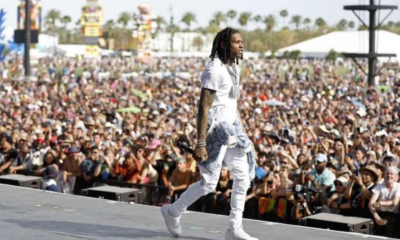


Why Are So Many Rap Concerts Getting Canceled?
-


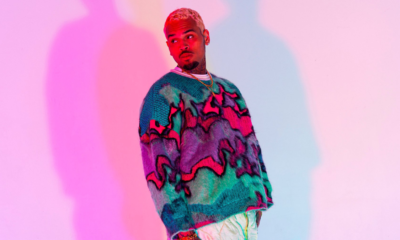



CHRIS BROWN: The Top Recording Artist ALIVE [Vocal Range]
-

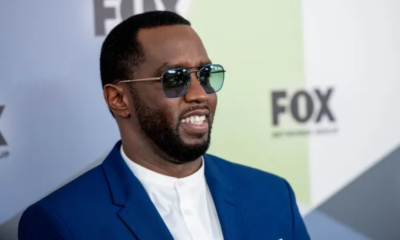


3 KEY ENTREPRENEURIAL LESSONS I LEARNED WHILE WORKING FOR P. DIDDY AND BAD BOY ENTERTAINMENT
-

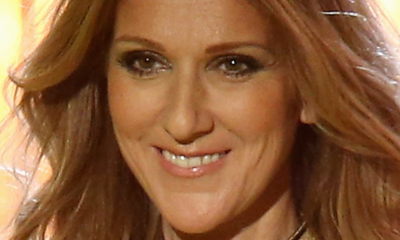


Céline Dion was diagnosed with a “very rare neurological disorder” that prevents her from singing normally
-

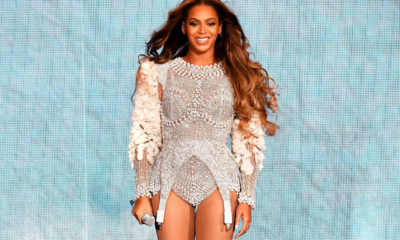


Beyoncé’s New Album, RENAISSANCE
-

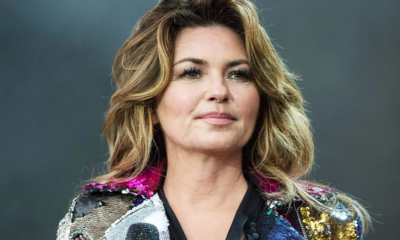


Shania Twain Opens Up About ‘Scary’ Lyme Disease Symptoms: ‘I Thought I‘d Lose My Voice Forever’
Business
Why Are So Many Rap Concerts Getting Canceled?
From a handful of Lil Baby concert stops to large events like the Made in America festival, rap concerts have been getting canceled quite frequently in recent years.
Published
9 months agoon
August 17, 2023By
Contributor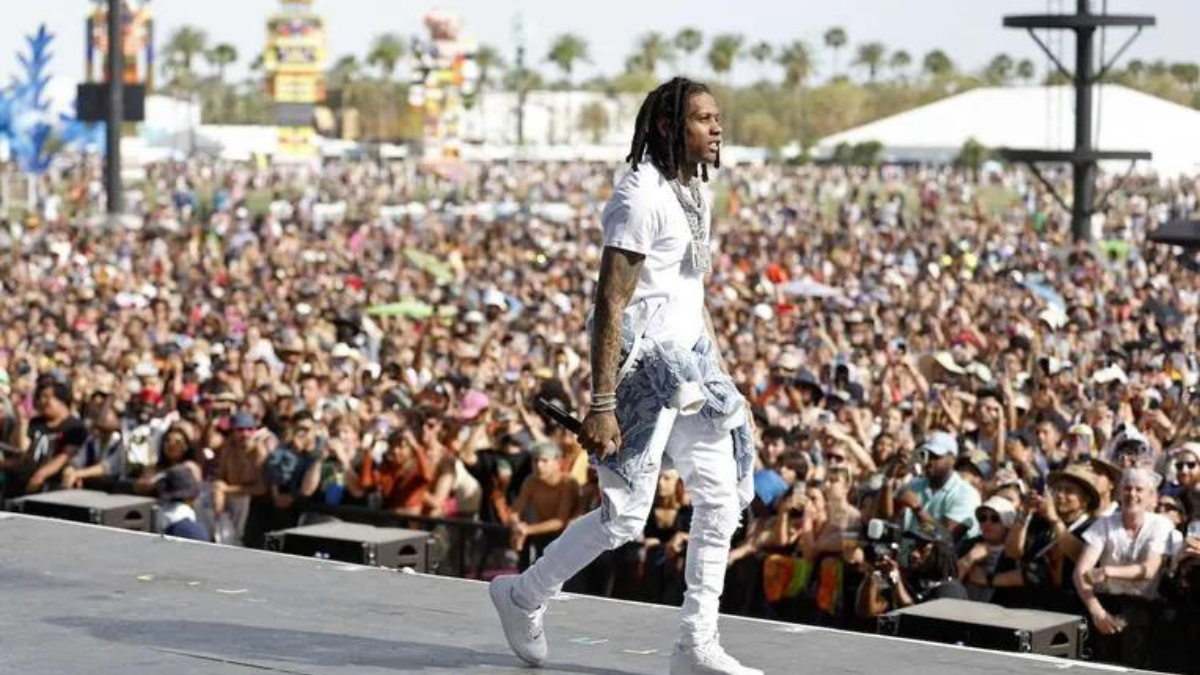



Dan Runcie


Lizzo at a concert in Minnesota (via Manitou Messenger)
Nicki Minaj’s NICKIHNDRXX Tour — canceled in North America. Chance the Rapper’s Big Day Tour — canceled everywhere. T-Pain’s 1UP DLC Tour — canceled. Cardi B’s Invasion of Privacy Tour— chose not to do one.
Touring’s traditional model needs work. Cancellations have happened for years, but this recent wave is different. Many hip-hop artists overestimate demand for ticket sales. We live in an era with endless data, but touring decisions still seem like the industry blindly throws darts. Meanwhile, artists who can sell out those same venues have proudly taken new approaches. These trends are connected.
The popularity of music festivals and concert residencies have added new variables to the live performance mix. Mainstream artists are on a quest to maximize each option. Some are farther along than others. But by the time the majority of rappers find the ideal balance, the touring business might be behind the curve.
Opportunity cost is higher than ever
When artists are on tour, they’re on the road day-in, day-out. It’s traditionally seen as a justifiable tradeoff since many artists earn a majority of their revenue from touring. But it’s still time-intensive, laborious, and costly.
Here’s what I wrote in 2018 in Why Choosing the Right Concert Venue Matters:
A few years ago, Beyoncé, like Drake, once played it safe with concert tours. In 2013 and 2014, The Mrs. Carter World Tour earned an impressive $230 million, but it took Queen Bey 132 shows and twelve months of touring to do so…
Had Beyoncé subjected herself to the same arenas for [On the Run Tour, The Formation World Tour, and On The Run II Tour], she would have needed to perform an additional 207 shows since 2014 to match the $565 million her concerts have grossed in revenue. It would have been impossible to do all those shows while pregnant with the twins, make Lemonade, and do all the other stuff Beyoncé does.
There’s only a handful of artists like Beyonce who can justify the jump to a stadium. For the rest, festivals and short-term Las Vegas residencies are a viable alternative.
But even Taylor Swift has moved on from stadium tours. This summer the 1989 singer will do a European festival run (like Cardi B did last summer), then launch her own festival, Lover Fest, in Boston and Los Angeles. It doesn’t get more 2020 than that.
In an August interview with Ryan Seacrest, she explained why she didn’t do a traditional tour:
“I’m not quite sure what we’re doing with touring. I don’t want to do the same thing every time because I don’t want my life to feel like I’m on a treadmill. There’s a lot that goes into touring that nobody knows about — like you have to reserve stadiums like a year and a half in advance, and that to me is a lot. With ‘Reputation,’ I knew that nobody would really fully understand the album until they saw it live, but this album is different because people are seeming to get it on the first listen.”
All that’s true, but let’s remember two things. First, Taylor is in a select group of artists who can sell out the Rose Bowl, Soldier Field, and MetLife Stadium on back-to-back nights. She wouldn’t forgo that opportunity unless it made financial sense. Second, she’s right about the challenge in reserving venues eighteen months in advance. It’s especially frustrating for those who rise quickly and can’t easily pivot. It’s a good problem to have, sure. But it’s still a problem.
Last year, Lizzo rose to stardom so fast that she outpaced her touring revenue. According to Billboard, last spring’s Cuz I Love You Tour was performed in front of crowds of less than 2,000 people, grossing just over $50,000 per night. To capitalize on her momentum, she came back in the fall with the Cuz I Love You Too Tour at venues that were twice the capacity. But by that point “Truth Hurts” was #1 on the charts and nominated for Grammys. She still couldn’t keep up.
My wife and her friends bought tickets for Lizzo’s October show in San Francisco. They bought tickets at face value back in May for $50. The week before her show they were selling on StubHub for $350! It was a scalper’s dream but an artist’s biggest frustration. All the value was captured by the secondary market. Sure, there’s a chance Lizzo pulled a Metallica-Live Nation and scalped her own tickets. But if that ever happened… whew buddy. The Lizzo hive (and the anti-Lizzo hive) would have burned the internet down by now.
Hip-hop has an uphill battle
The mentality required to succeed in hip-hop and touring is in direct conflict. Most mainstream rappers take pride in beating the odds. They had to bet on themselves to make it this far. Why stop now?
But touring requires far more pragmatism. It’s economics. When supply meets demand, everyone’s happy. Those economics can be especially challenging for hip-hop though, where its streaming popularity outweighs its touring performance.
In a 2018 Wall Street Journal article, Neil Shah broke down how hip-hop may rule the record industry, rock is still king on the road:
There are many reasons that rock remains so powerful on the road, including that, as an older genre, it had a head start on pop and rap. Giant tours by older rap icons like Jay-Z aren’t as common. Fans of newer hip-hop artists skew younger, including teens with less disposable cash, making festival gigs more economical than lengthy, sprawling tours.
“Drake can do four Madison Square Garden shows, but Phish can do 17,” says Peter Shapiro, a New York-based independent concert promoter. Especially in the day-to-day business of clubs and theaters, rock bands, he adds, “still have a huge impact.”
This can make it mistakenly easy for an artist who dominates on RapCaviar or SoundCloud charts to think they are ready for the biggest stages available. Of the top 10 global tours of 2019, none of them were hip-hop. In 2018, just one (Beyonce and Jay Z’s On The Run II). Genre plays a factor.
A good clip from The Joe Budden Podcast where they break down Chance’s canceled tour.
Artists bet on themselves, which is costly
Challenges arise when artists who were once the hot kid start to cool off and need to accept reality. They might not be DONE done, but their prime days are behind them.
That’s where Nicki Minaj and Chance the Rapper are at. Neither admitted that low demand drove their cancellations, but we can follow T-Pain’s humble advice and read between the lines. Several industry insiders believe that both Nicki and Chance couldn’t sell enough tickets to fill 25+ arenas across the US. (I also covered Nicki’s ticketing woes in the Globalization of Hip-Hop, Part I and Chance the Rapper’s in a recent Member Update.)
When both rappers first announced these tours, I thought to myself, “Who the hell gassed them up to think they can still command an arena tour? Who signed this off?” There are plenty of fingers to point, but honestly, neither rapper needed extra convincing.
Keep in mind, Nicki spent the past decade silencing doubters who never thought a female rapper could reach the heights she did. Chance proved the industry wrong as an indie rapper who won Grammys and did arena tours. Their brand is to stay resilient when projections told them otherwise. You wanna go back in time and try to convince them that the lackluster responses to “Chun-Li” and “Groceries” were signs of what’s to come? Yea, good luck with that.
Their mentality is understandable, but it distorts reality. And as more superstars like Taylor and Cardi consider alternatives to touring, promoters may be stretched to fill those same venues with artists who can’t compete in that weight class. It will inevitably lead to more cancellations.
There are levels to this
The traditional touring model is extremely linear. There are tons of venue options for rising rappers who want to perform for a few hundred or a few thousand people. But the leap to arenas (~15,000) is no joke. The jump up to stadiums (~50,000+) is even steeper. The artists at the in-between stages are more likely to leave money on the table or cancel because they couldn’t sell.
The popularity of festivals, residencies, and private events add more options to meet demand:


As AR/VR capabilities develop, more of them will be added to this mix too
I made a similar chart last year on how the traditional albums model has evolved with “mixtapes,” visual albums, podcasts, and more. The trend is similar here. Increased options lead to more experimentation and put artists in control.
Where is this all heading?
This trend should be top of mind for both Live Nation and AEG, which own and operate thousands of venues. It should also concern those who individually manage their venues.
I don’t expect arenas to shorten the timeline for advance booking or cancellation policies. That’s the nature of events in popular venues, whether it’s a wedding or a Migos concert. But they can lean into the trend by pitching themselves as locations for festivals, residencies, private events, or mixed reality experiences. It may be hard to compete against the machine of Coachella, but Rolling Loud and plenty of other festivals are more open to working with what’s available.
By now, every rapper with a big enough following has had at least wondered, “What if I launched my own Astroworld or OVO Fest? Should I do a Vegas residency too?” As I laid out in Why Rappers Started Running Their Own Music Festivals, artists want to leverage their power and run the show. They want the money from the highest profit margin areas of live performance, like sponsorship and concessions. It’s the same model that Floyd Mayweather uses in his boxing matches. He rents out the building and collects the revenue from everything else.
Touring will always be key for the up and comers who want to meet their day-ones. It worked for Meg the Stallion in the rooftop cypher days and Cardi B in the Love & Hip-Hop days. It will always be a core for the legacy artists who can draw crowds wherever—like Rolling Stones, Elton John, or Jay Z. But there’s a whoooole lot of artists between up-and-comers and Hov.
These artist want more options, and the market can offer them. The rest of the industry will be forced to adapt sooner or later.
READ MORE: https://trapital.co/2020/01/09/the-hip-hop-touring-business-is-broken/


Dan Runcie
Founder of Trapital
Business
CHRIS BROWN: The Top Recording Artist ALIVE [Vocal Range]
Chris Brown, American recording artist, and an actor were born in Tappahannock, Virginia to Clinton Brown a corrections officer at the local prison and Joyce Hawkins, former director of a daycare center.
Published
1 year agoon
May 13, 2023By
Contributor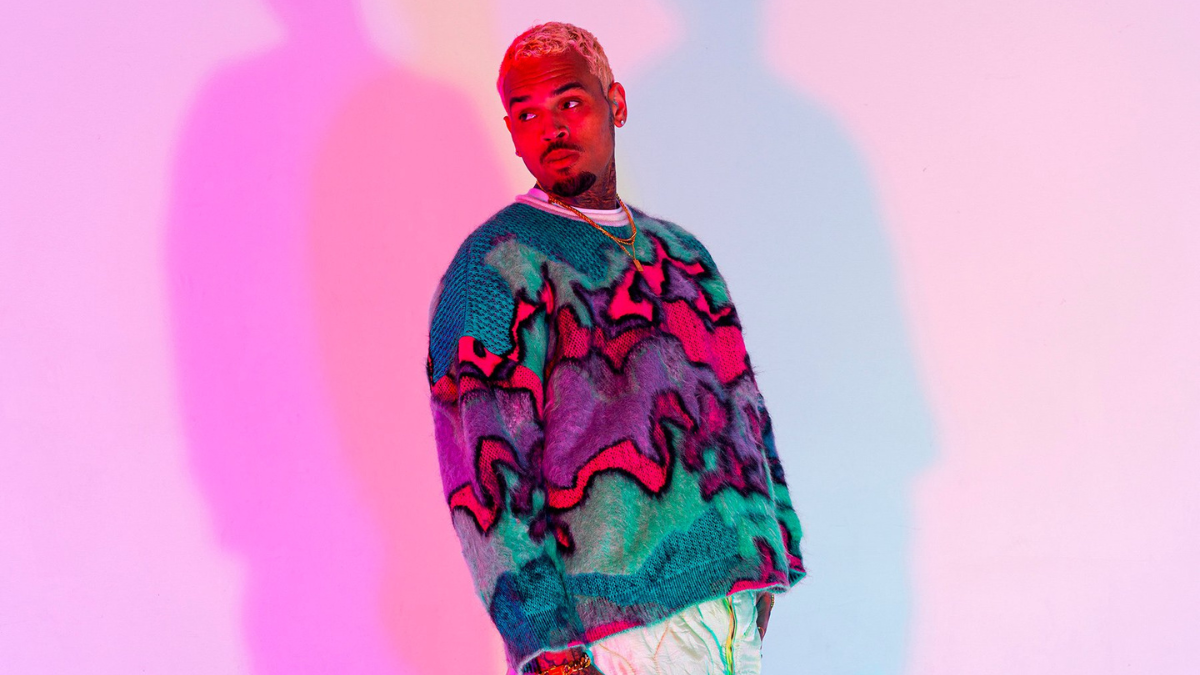

His keen interest in music and dance made him teach himself both the arts and he declares that Micheal Jackson was his role model. He also participated in the local church choir and local talent shows. His perfection in mimicry of an Usher performance made his mother realize his potential and she started looking for a record deal opportunity.


Chris Brown’s Voice Type & Vocal Range
Chris Brown has a light Lyric tenor vocal style. His vocal potential was first discovered by his mom when he was still a kid. Brown reveals to People magazine that he was 11 and watching Ushers performance ‘My Way’, and I began endeavoring to impersonate it. My mother resembled, ‘You can sing?’ And I resembled, ‘Well, no doubt, Mama.” in this way, and began to sing.
Voice Type: Light-Lyric Tenor
Range: E2-E5-G#5


Chris Brown’s voice sits high up. He has relative easiness in the fifth octave (Yeah 3x, This Christmas, Crawl). The strain really makes it difficult for him to sing there, yet he does not have much of a problem. He likewise sings to be a baritone in the E4-G4 range effortlessly.
Not so sure where this originates from, yet I have seen it many times previously. In fact, He is brighter and lighter than the spinto. Due to the fact that the spinto will have a more substantial, warmer and substantial voice. Chris’ voice is awfully splendid and light to be a spinto.
He has a light and thin voice. His voice is additionally surprisingly energetic. Thus he should be a light-verse tenor.
Achievements
At the tender age of sixteen, Chris Brown made his debut with an album titled “Chris Brown” featuring the runaway hit single “Run It”. This song topped the Billboard Hot 100 in 2005 making him the first male artist whose debut song topped the chart after Montell Jordan had achieved the same in 1995. The RIAA (Recording Industry Association of America) awarded the album a double-platinum certification and it sold more than 2 million copies in the US.
Riding on this success Chris Brown, American recording artist released his second studio album in 2007 November titled “Exclusive”. This album had two hit singles “Kiss-Kiss” featuring T-Pain and was number one and “With You” which became number two in the Billboard Hot 100 and was awarded a Platinum certification by RIAA. “The Forever edition” which is a deluxe version of his album with the single “Forever” was released in 2008 in May and this also peaked at number two position in Billboard Hot 100. “Graffiti” his third album was brought out in 2009 December and its official single “I Can Transform Ya” came up to number 20 in the Billboard Hot 100 becoming Chris Brown’s eighth hit on the charts.
Brown has other hits under his belt such as “No Air” with Jordin Sparks, “Shawty Get Loose” with Lil Mama and T-Pain, “Shortie Like Mine” with rapper Bow Wow all of which reached within number ten in the Billboard Hot 100. His dancing capabilities gave him an extra edge over other singers and he was compared to Micheal Jackson and Usher. On the negative side, Brown was given five years probationary sentence and 6 months community service for assaulting singer Rihanna. In 2010 May Chris Brown American recording artist brought out “Fan of Fan” a mixtape with Tyga and “Deuces” from this tape was released in 2010 June reaching the number one position in the U.S.
Musical Style & Influences
Chris Brown has referred to various artists as his motivation, overwhelmingly Michael Jackson. Chris Brown underlines that “Michael Jackson is the motivation behind why he involved himself in the music industry at the beginning of his music career. In “Fine China,” he represents Jackson’s impact both musically and outwardly as Britini Danielle of Ebony magazine mentioned that the melody was “reminiscent of Michael Jackson’s Off the Wall”.
And He also did mention that Usher is another role model in the music industry who seems to be a more contemporary figure for Brown. He discloses to Vibe magazine about Usher that he was the person who the youths gazed up to, in the singing and dancing world, admired him, and keeps up “If it was not for Usher, at that point Chris Brown couldn’t exist.”
Some critics suggested that Chris Brown’s first experience with R&B, perceiving his contemporary adaptions and flexibility in R&B music. As customary R&B prospered around him, the youthful singer started the development of the genre”. His first single “Run It!” as a “prelude to what Brown would keep on doing for the following decade: determinedly upset develops of blues and rhythm.
Business
TOURING AND THE SINGER
Touring artists experience a wide range of issues including physical and vocal fatigue, mental boredom, poor health…
Published
1 year agoon
May 10, 2023By
Contributor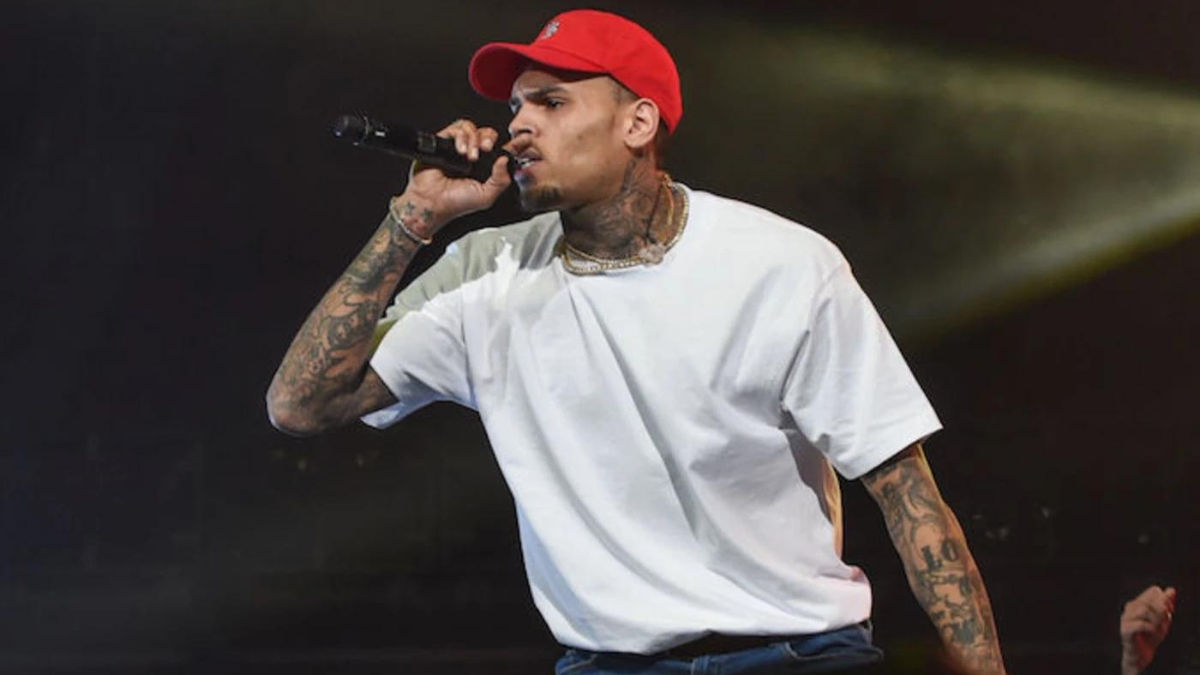

1. How important are vocal warm-ups and why?
Warm-ups are almost more important than vocal technique practice. It is vital to ensure we are getting the vocal ligaments and the intrinsic vocal muscles ready to do the job required during singing. When we talk we only use a limited range of pitches (around a major third or so) but when we sing we may use over two octaves. By warming up we are getting the different layers of the vocal folds ready to work at the higher frequencies required for singing. It is also important to get the larynx and the articulatory muscles ready to deal with singing lyrics. If we don’t get the voice ready and warmed up then we are running the risk of inducing vocal fatigue and ultimately misuse which could lead to vocal pathologies such as vocal fold oedema (swelling), nodules or polyps.
2. How important is vocal technique and why?
The reality is that there are many contemporary commercial singers with a successful career who do not have vocal technique to back their art or the vocal workload experienced as a touring singing/artist. It may be possible to get away with poor vocal technique in the short term or the studio setting, where it is possible to record as many tracks as necessary to get a good take. But when one is performing, live and touring, poor technique will eventually have a negative compound effect on the vocal folds, which increases the risk of injury. Having a well structured technical regime not only helps the singer to build range, stamina, strength and vocal control but will also help to readdress any imbalances acquired during the performance. Understanding how the voice works technically will help the singer to make the right choices when it comes to repertoire, vocal style, use of range or singing with a tired or sick voice.
When it comes to the creative side technique will ensure that the artist can realise their creative vision, to sing unhampered by limitations of vocal range, the ability to transition easily between registers, breath management, vocal tone, the ability to sustain long notes, vocal qualities and dynamic control.
3. What physical and mental effects can touring have on an artist? How can this contribute to vocal health problems?
Touring artists experience a wide range of issues including physical and vocal fatigue, mental boredom, poor health, disruption to dietary and daily routines, feelings of isolation from friends and family. Whether they are travelling in a band van, tour bus or flying, most artists suffer from disruption in sleep, daily routine, dietary habits etc. When there is a group of people travelling together in close proximity there is also an increase in risk for communicable illnesses such as colds and cases of flu. Flying may cause dehydration and vocal fold swelling due to an increase in atmospheric pressure. This may cause the voice to be husky or hoarse and limit the singer’s ability to access their upper/lower ranges. Environmental conditions such as air-conditioning, heating, humidity, dryness, altitude and cold temperatures will also impact the singer’s physical, mental and vocal health. In addition, if they are crossing time-lines then jet-lag will contribute by reducing physical and mental function. Being tired, stressed, rundown or dehydrated will impact the vocal fold’s ability to function optimally resulting in loss of range, tonal quality and sustainability.
4. Are vocal health problems more common today? Or do you think artists are more open about their health as it is mediated in the press more?
I think it is a combination of instant media and the kind of pressure, vocally and physically the current day artist is under. Pressure to ensure they sell their music and make money for their label etc. This means that they tour heavily and they are obliged to do a heavy load of publicity and networking, in turn, their voice does not get as much rest as it needs to do its job on stage night after night. Depending on the label/management tours may be more intensive with more performances packed in over a shorter period. Some labels have a policy of not allowing their artist to do more than three shows in a row, but not all artists are well looked after in this way. In the past, it would have been viewed more negatively by the public/fans if they knew that the artist was having vocal problems. Today people seem to think it’s par for the course as there is so much in the media about singers who have to cancel tours and gigs due to voice problems.
5. If there is no option to cancel a show a steroid injection may be required. What are the effects of this? Is it only temporary? Can it do more harm than good?
Steroid injections can be very effective in the short-term to help a performer get through a show. When a major artist cancels it means the loss of millions of dollars. So the management tries hard to prevent this from occurring. One-off steroid injections do not commonly have long-term medical side-effects. It only becomes problematic when this becomes a regular dose. Having an injection does carry a risk of injury if it is not done safely and accurately. High or prolonged doses of steroids (injections or tablets) will impact the body systemically e.g. excess fat distributed weirdly, prone to infections, and a risk of injury to the vocal folds such as nodules, haemorrhage or laryngitis.
Given appropriately and safely a steroid injection can save the day.
6. Are there any other ‘quick fix’ medicines that are used on tour? What are the effects?
I can’t think of any. I imagine any kind of analgesia that helps with pain might be used in some cases. Depending on the type of the analgesia will depend on the side effects. Obviously, narcotics run the risk of dependency and poor motor control. Some of the more common over the counter types such as paracetamol and codeine can cause constipation if taken regularly. Salicylates (e.g. aspirin) act as blood thinners and are not recommended for singers as a possible side-effect could be vocal fold haemorrhage.
7. Is it necessary to have surgery or will the body fight back if it’s allowed complete vocal rest?
Surgery depends on the type and severity of the vocal pathology as well as the time constraints of the artist. If there is pressure for the artist to get out and work e.g major tour, imminent album launch or significant performance then the powers that be are more likely to opt for surgery. If the artist/singer is not under such pressure or can’t afford surgery then alternative options may be considered at first.
- These days vocal nodules are generally treated with therapy and vocal technique if they are in the pre-nodular or soft stages. Some surgeons will treat hard nodules with surgery, though I have seen cases where nodules have not been surgically removed and the singer had successful rehabilitation through voice therapy and correction of poor vocal technique.
- Vocal polyps and severe haemorrhages, cysts and granulomas generally require surgical intervention. The singer is then on vocal rest for 2-3 weeks.
- Vocal oedema requires rest and addressing the cause.
- Infections and laryngitis do not require surgery.
It very much depends also on the doctor i.e. their training and experience. An ENT surgeon or ENT/laryngologist who works with singers a lot will tend to only do surgery if necessary, and there is no response to voice therapy and/or addressing the cause.
Vocal rest will help in many instances but the problem may re-occur if the cause is not addressed. Many common voice issues in singers can be dealt with through rest, rehydration, good vocal technique and a balanced healthy diet.
8. Do you think audiences have higher expectations when going to watch an artist perform? ie: Pitch, physically performing.
With the use of auto-tuning in the studio, audiences have come to expect a singer to sing perfectly. This is compounded by the impact of music videos and the use of lip-syncing, as well as the use of auto-tuning in the live setting. Having said that the general listening audience is not always focusing on things such as pitch or even lyrics, for them, it’s the experience of the live performance.
9. What is your advice for a singer going on tour?
Where possible sleep – cat naps are as useful to the body as whole night sleeps, ensure you are getting 1.5 to 2 L of water a day, take dietary supplements, avoid respiratory infections like the plague. Take your own pillow on tour, healthy snacks, eyeshades, earplugs, nebulizer with normal saline, throat massager and most importantly straws so you can do regular straw therapy.
Don’t expect your voice to be able to work optimally if you don’t look after it, excessive talking, alcohol, smoking, drugs, poor diet and late nights will prevent your voice from working to its best.
At the end of the day, this is your job and what your audience is paying for. You are the equivalent of a vocal athlete. Follow these tips:
- maintain a regular and personalised vocal exercise regime
- do warm-ups and downs before/after a performance
- if possible change repertoire, vocal range and performance energy to accommodate the days when you or your voice are fatigued
- check in regularly with a vocal coach who understands how to keep you vocally fit and healthy
- do physical exercise to ensure your body is supporting your voice.
- Keep well hydrated
- Maintain a healthy and balanced diet with supplements to boost your immune system
- sleep whenever possible
- avoid sick people!


Why Are So Many Rap Concerts Getting Canceled?



CHRIS BROWN: The Top Recording Artist ALIVE [Vocal Range]


TOURING AND THE SINGER
Trending
-



 Business2 years ago
Business2 years agoThe Day Jordin Sparks Stopped Singing
-





 Business1 year ago
Business1 year agoCHRIS BROWN: The Top Recording Artist ALIVE [Vocal Range]
-

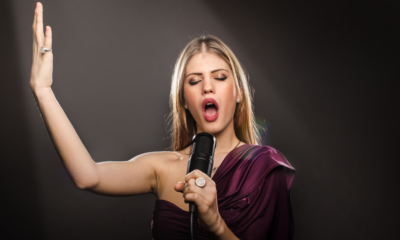

 Business2 years ago
Business2 years agoTVM-TV LIVE
-

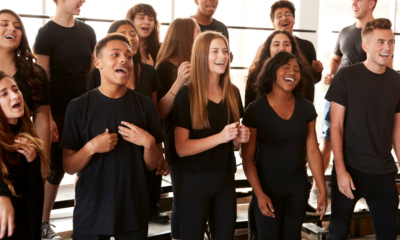

 Business2 years ago
Business2 years agoBenefits of Joining a Choir
-

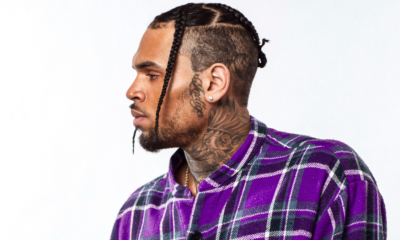

 Business2 years ago
Business2 years agoChris Brown’s 12th Studio Album “Breezy”
-

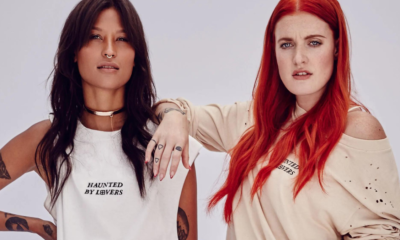

 Tech7 years ago
Tech7 years agoICONA POP
-



 Business2 years ago
Business2 years agoFood for Singers: The Diva Diet
-

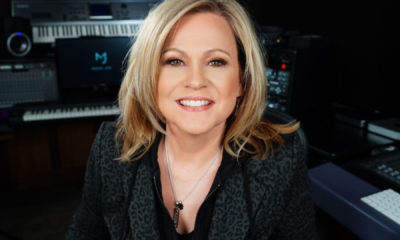

 Business2 years ago
Business2 years agoINTERVIEW WITH MAMA JAN




